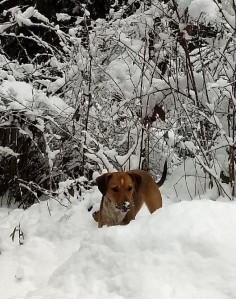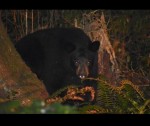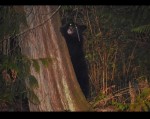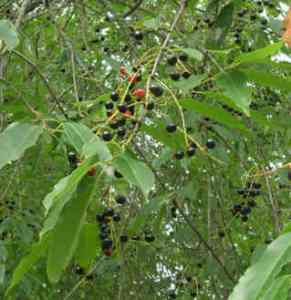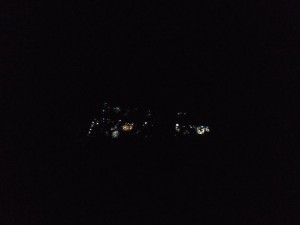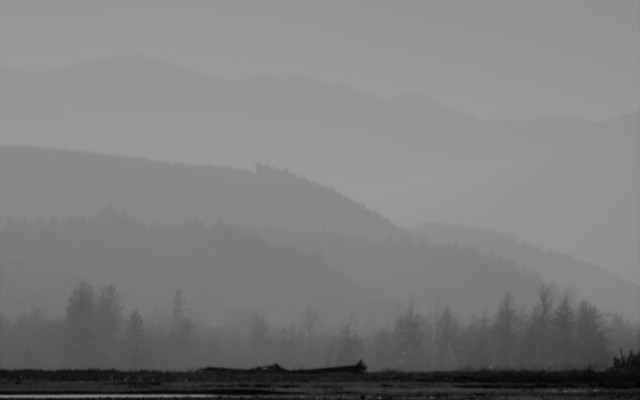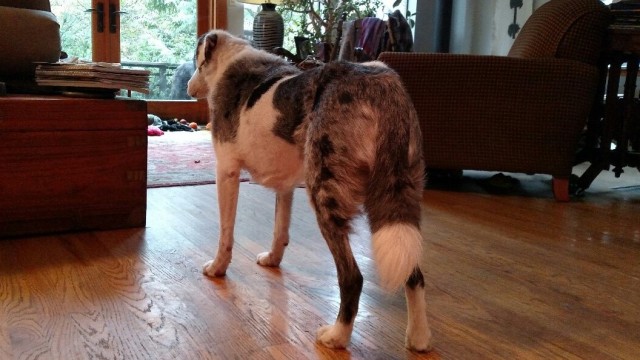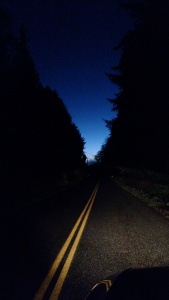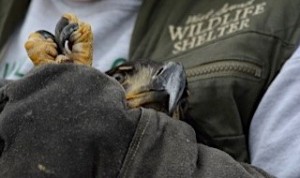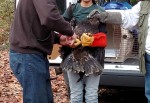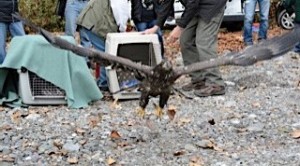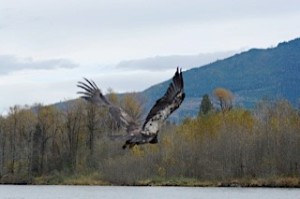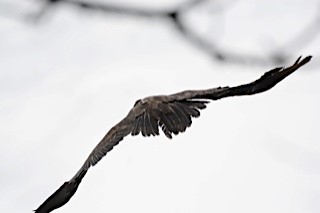It’s on.
It seems a little early this year, but maybe it seems a little early every year. It’s certainly not something one looks forward to, like the honk of migrating geese, or the fluffier coats of pet dogs and saddle horses.
About a week ago I found my first truly noteworthy giant house spider of 2019: a medium-sized character, who suddenly materialized in my bathtub. I had been in there just the night before, so it was a shock to find this thing manifested, whole, dark, and motionless, extended across the bottom curve of the white tub, just, apparently, being.
Since then, a much larger one, probably female, showed up in the sink in the guest bathroom. This time of year I keep a paper cup centrally located, ready for these emergences as well for as capturing wayward moths at night. The protocol is to either cover the spider with the cup and slide a paper underneath (better yet, some form of cardstock, which is less likely to suddenly crumple while I’m moving it) or if the spider is on an angle, nudge it to the side of wherever it is and then cover it–then take the thing out under the eaves of the house or over to the side of one of my sheds. Research tells me house spiders really do only live in houses, and “putting them outside is like taking a human… and tossing them out into the middle of the ocean.”
Fine. But I am not highly evolved enough just yet to release them in another room of my personal living space.
I read up on this every year and find out the same thing: there aren’t more of them as the seasons change, and they’re not moving indoors, they’ve just gotten to maturity and full size, and—the articles tell me, they’ve already been here. (Where?) All year.
What’s happening now is they’re touring around, looking for mates. So while these creatures are seasonally tooling around my home trying vainly to find one another, they’ve paused to take up residence in one of my various basins, because like a lot of people, they do enjoy spending time close to water.
This morning as I came into the kitchen, still bleary from sleep, I spotted a couple of long, dark legs protruding from beneath a couple of unwashed dishes. “Okay,” I said, “we’re not doing this,” and the protocol was engaged and out we went.
Research also tells me that they do not come up through the drains. (so where was this jar-lid sized thing before it appeared in my sink?)
I am not by nature sanguine about spiders, though I’ve not been one to have the severe responses of many people I know. When I was pretty young, probably around seven, I remember my buddy Larry finding a daddy longlegs and taking it gently into his hand, and I don’t think he was doing the little boy thing of trying to scare me because he probably didn’t expect me to scream; he walked over and offered it to me: “They’re really cool,” he said, “and they won’t hurt you. See?” I declined, but I remember Larry standing there, down by a small creek where we hung out, letting the longlegs mince around his wrist and arm, before he shook it off into the grass.
Any time a spider was spotted in my childhood home, my mother would vault across the room with an anguished scream. Someone else had to dispatch the thing, either smashing it or scraping it or whacking it with a broom or I don’t remember what happened, I just know they had to go. Mother loved wildlife, though, and especially butterflies, so one year in an act of loving rottenness, my stepfather presented for her birthday a collection of small, state-of-the-art field guides, carefully wrapped: she ooed and ahhed as she sorted down the stack—Birds of Midwest, Trees of Northern America, and then just before she got to the one on butterflies, his evil plant: Field Guide to North American Insects and Spiders, which, predictably, Mother pitched across the den with a shriek, even though the cover photo was a ladybug.
I thought of that field guide shortly after I moved out here to Indianola, where I am surrounded by trees and woodsy spaces. After a year living here I realized my house needed to be stained, and, being moderately-sized, I figured I could do it myself. This meant I was all over it: across the sides and around the windows of course, but also under the eaves, and crawling under the deck, trying to cover all surfaces of siding.
I hadn’t really thought about it, but I came in contact—often face to face—with a lot of spiders—all. Kinds. of varieties. Small yellow ones, dime-sized two-toned kinds, tiny black ones, bulbous brownish things—and I wished I had my mother’s field guide, which despite her horror did remain on the bookshelf with the others.
I actually went looking for a field guide, but the university bookstore told me they don’t carry it anymore because there are so many types of spiders in the US (over 3,000?!) the guides aren’t all that much better than the old ones for children.
By the time I finished the house, I wasn’t in love with them, but I was hugely desensitized: it just wouldn’t have been possible to get the house done if every time I encountered a spider I had to stop, and trying to kill them all seemed ridiculous.
The giant house spiders, though, are a whole different ball game.
It turns out they’re not native. Like a lot of invasive species they’re European. What they really are is large. They are a shock to encounter, and sometimes (brace yourself if you’re spider-phobic) they’re zooming around. One of my first autumns here I was sitting on the floor, leaning against the couch and watching a movie, when I was distracted by activity about six feet to my right: a spider trying to sneaky-Pete his way across the carpet at a pretty good clip, and so large I could see him even in the half-light of the TV screen.
The research tells me the giant house spiders are harmless. In fact, the research always tells me that they’re beneficial: they’re busy eating flies and any other small insects around my house, and they don’t bite, and they don’t have any particular interest in people because they can’t really distinguish what they’re crawling on: “Essentially, you have the same chance of getting bitten by a giant house spider as your linoleum floor.”
Then the articles go on to mention the dreaded hobo spiders that are supposedly the evil twins of giant house spiders, but, once again, not only are hobo spiders not common in the Pacific Northwest, they live primarily outside, they’re much smaller than these things in my sinks, and they don’t have any intention of biting humans, either.
So why is it that we react the way we do to spiders? Why are they so much more alien than, say, bumblebees or mudpuppies? Why don’t people panic over the sight of starfish, or octopus? And really, the most baffling when you think about it, humans go all moony when they see photographs of large animals—bears, mountain lions, hippopotamus—that really could kill them.
I didn’t come to my détente with these things because I’m so open minded and loving. The first few times I ran across one of these mondo-spiders, which must have been in some apartment in Seattle, I remember freezing in my tracks to try to figure out what to do: the spider was simply so huge that the idea of smashing it was more disturbing than moving it.
All I offer is a head’s up; if it hasn’t occurred yet in your particular domain, it’s that time of year: the giant house spiders are on the move. Take into consideration all these hopefully calming facts, enjoy the links below, and if you do remove them from your house, release them near some sort of structure (how do you feel about your neighbors?)
Do what you must.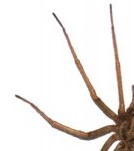
McNamara, Neil. “7 Myths about Giant House Spiders.” Patch, 15 Sep, 2017, Updated 12 Sep. 2018, https://patch.com/washington/seattle/spider-season-puget-sound-myth-local-arachnologist-says.
“Spider Myths.” Burke Museum, https://www.burkemuseum.org/collections-and-research/biology/arachnology-and-entomology/spider-myths.



